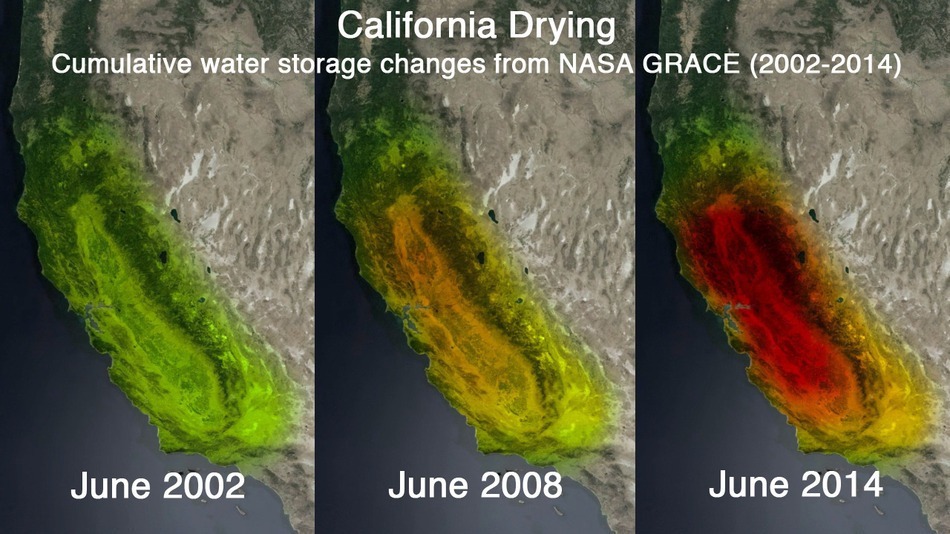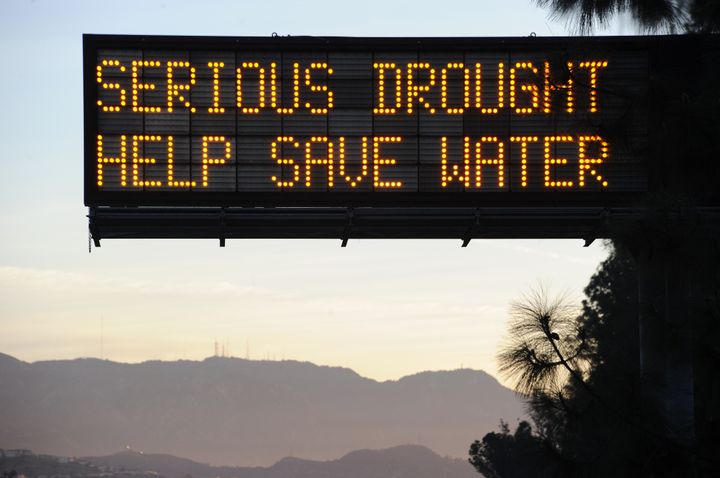
California is in the midst of one of largest droughts in its history. What began years ago with record low rainfalls, shrinking snowpacks and dimishing reservoirs has since escalated into a statewide crisis. In fact, the situation has resulted in the first-ever series of emergency rationing measures being instituted, and it appears that warnings from a NASA scientist may have played a large role in that.
The use of satellites to gather meteorological data and information on the planet is a time-honored practice. However, Jay Famiglietti, the Senior Water Cycle Scientist and leader of the JPL Water Initiative, recently pioneered the use of a NASA satellite system to track changes in water use worldwide. Back in March, he wrote a popular op-ed piece for the LA Times based on his research, which was titled: "California has about one year of water left. Will you ration now?"
His studies, which used data obtained from the Gravity Recovery and Climate Experiment (GRACE) satellite, have shown that the Central Valley region of California, which is one of the largest fruit and vegetable-growing regions in the U.S., is sinking by up to a foot a year thanks to farmers tapping underground aquifers in an increasingly desperate search for irrigation water.

NASA GRACE data showing land in much of California's Central Valley sinking from groundwater extraction. Credit: NASA/UC-IRVINE
What's more, the GRACE satellite data revealed that total water storage in California has been in steady decline since the satellite was first launched back in 2002. Because of this, Famiglietti indicated that California had only a year of water left in its reservoirs, and at a time when their strategic backup supply (i.e. groundwater) is rapidly disappearing.
This op-ed piece and its findings led to widespread concerns all across the state, and may have been responsible for California Governor Jerry Brown announcing his state's first-ever mandatory statewide water restrictions. Instituted in March of this year, these restrictions seek to curb state-wide water usage by at least 25%. However, as Famiglietti stated, mandatory rationing is only the first step in addressing this problem.
In addition, he recommended that the Sustainable Groundwater Management Act be accelerated. This law, which was drafted in 2014, called for the formation of numerous, regional groundwater sustainability agencies by 2017. Each of these would be responsible for adopting a plan by 2022, and achieving sustainability by 2042. At that pace, Famiglietti warns, it will take almost 30 years to see any results, by which time, there may be no groundwater left.

Folsom Lake, pictured in January 2014, serves as an example of the extent of California's drought. Credit: zmescience.com
Third, Famiglietti claimed that California needs a task force to begin brainstorming ways of how to lay the groundwork for long-term water management strategies. This would include coming up with ways to leverage new technologies and make changes in policy that would see to sustainable water use in the long-term, not just for the foreseeable future.
As with all things, public awareness is key. It is only when citizens are made aware of a crisis, and given the full rundown on its causes and potential consequences, that they can begin to apply the necessary pressure to their governing bodies.
In addition, public support and involvement could help create some of the innovative solutions that are necessary to curbing water use and ensuring a more steady and sustainable supply. Between grey-water recycling, and desalination, solutions exist. All that is needed is for people to find cost-effective ways of applying them.
Got ideas on how we can sustainably use the world's most precious resource? Then be sure to check out the Global Fresh Water Challenge, the Clean Water Challenge, and the Seawater Desalination Challenge for a chance to win up to $100,000 in prizes!
Top Image Credit: scpr.org








